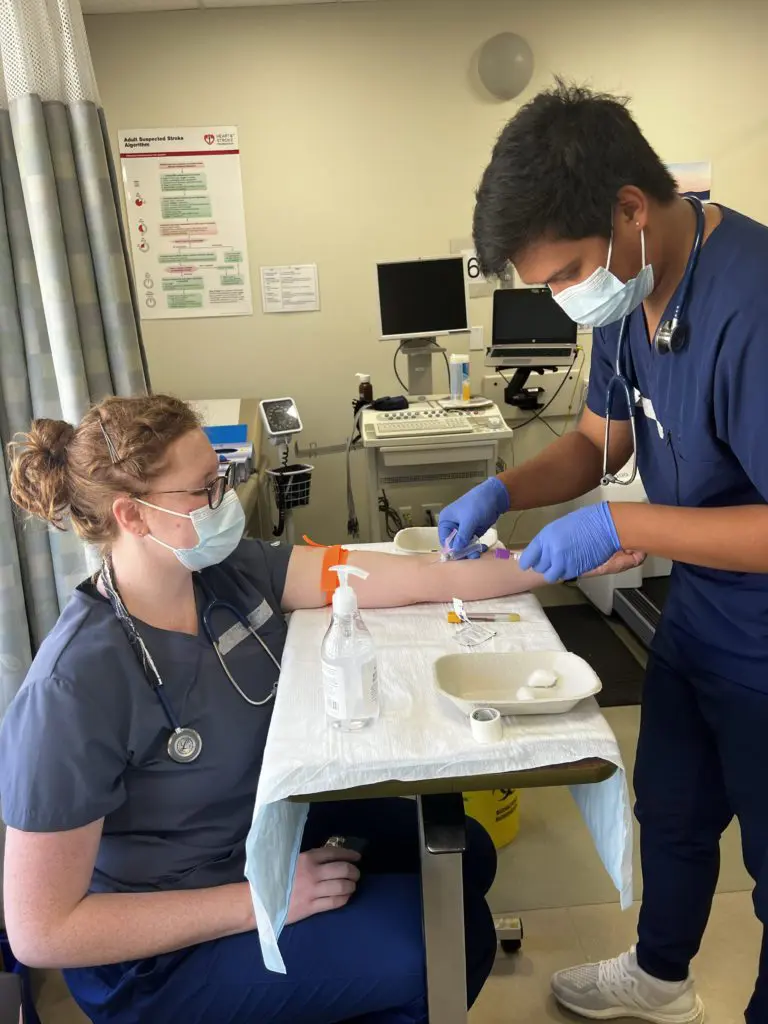A holter monitor is a small, wearable device that records the electrical activity of the heart. Usually worn 24-48 hours, it is used to monitor and capture random or infrequent electrical abnormalities of the heart. Palpitations or dizziness may be a symptom experienced by a patient, however, during a routine ECG test they may not present on the recording. The holter monitor is usually the next step to capture the occurrences. A holter monitor is like a continuously recording mini ECG machine that allows patients to press a button to record the time of their symptoms. Holter monitoring involves securely applying the electrodes to obtain a clear as possible reading from the patient. It involves proper skin preparation and patient briefing to ensure proper documentation of activities and symptoms.
One of the roles of a Cardio Tech (CT) is to be able to identify arrhythmias however minor. This means being able to identify obvious or minute changes. This also means having a keen eye for detail because when looking at 24 hours of recording it is easy to get tunnel vision and miss important detail – important detail that can mean a matter of life or death for a patient. During labs, I learned how use the holter monitoring software and how to modify settings to ensure the software labels the beats properly. I found that it was very important to know how the various arrhythmias presented themselves as well as knowing the threshold criteria, to accurately interpret holter scans. In addition, I came to understand the importance of having a solid base for rhythms, blocks and ectopic beat morphology; particularly because sometimes technology is not always accurate 100% of the time. There were instances where regular beats were labelled incorrectly due to artifact, so without the knowledge of what the correct labelling should be, it is easy to be off base for an interpretation. This not something a practicing CT ever wants because in this field there is limited room for error.
As a CT, one must be very patient while analyzing holter recordings because it’s easy to miss vital and subtle information. I found it was easy to transfer what I learned during labs to analyze and interpret recordings. I like identifying patterns and as a result picking up the abnormalities I enjoyed discovering. I must say it was a grueling experience during my online course. Time management was very important because a case can take anywhere from 45 minutes to 10 plus hours to analyze. Some cases were complicated with several abnormalities, that at times, I began to question my interpretation. Encouragement from my instructor, gave me confidence in my capabilities which helped me through. Staring for hours at a computer screen can irritate your eyes very quickly. As a suggestion, take frequent breaks and don’t leave assignments for the last minute. Overall, Holter Monitoring helped me reinforce visually what arrhythmias look like so over time, as I analyzed the various cases interpretation became easier.
Check out a video of our cardio tech students in action.






![An ECG demonstrates the extensive antero-septal-lateral myocardial infarction [heart attack] that Taryn witnessed.](https://stenbergcollege.com/wp-content/smush-webp/2022/12/ecg-1024x530.jpg.webp)



